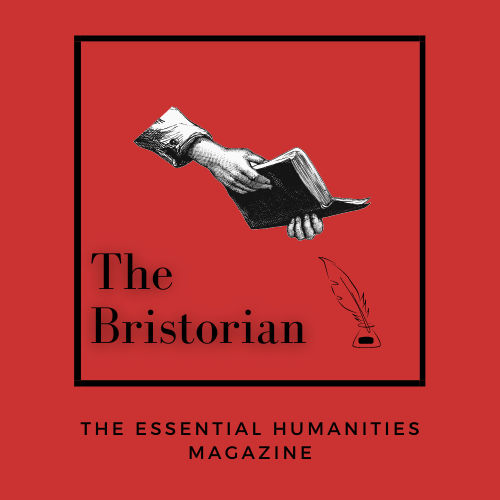‘Part of the Earth of Spain’: Remembering Bristol’s International Brigaders
By Ivor Starkey, First Year Spanish and French
"What's your proposal? To build the just city? I will.
I agree. Or is it the suicide pact, the romantic
Death? Very well, I accept, for
I am your choice, your decision. Yes, I am Spain."
W. H Auden, Spain
Most visitors to Castle Park will never notice the memorial fixed to the grey brick walls of St Peter’s Church. This humble plaque, emblazoned with the red, yellow, and purple of the doomed Spanish Republic, is dedicated to the four Bristol men who travelled to Spain to fight in their Civil War, which erupted in early 1936 upon Francisco Franco’s coup d’etat.
It names the fallen: William George Boyce, J. Burton, Leslie Huson, and Terence Edward Stephens. In the online archives of the International Brigade Memorial Trust one can find their places of birth, their occupations, and where and how they died. Burton, who married a Bristolian, and who may have lived on the now-lost Weare Street, died at the infamous Battle of Jarama. Huson, who lived in Avonmouth, had not been in Spain two months before dying in a Catalonian hospital of pneumonia. Likewise, Stephens, who is remembered as a “camarada muy disciplinado y firma”, passed away due to septicaemia in Barcelona, after being injured in the last months of the Battle of the Ebro.
The memorial to Bristol’s fallen Republican volunteers in Castle Park (Credit: Traces of War)
The International Brigades were the Spanish Republic’s response to Franco’s German and Italian contingents. Organised and promoted by the Communist International, volunteers from over fifty countries arrived in Spain to take part in the conflict; more than 35,000 volunteers, including some 2,100 Britons, answered the Republican call to arms.
With the democratic nations of Europe refusing to aid the Republic and taking the path of non-intervention, the International Brigades allowed those who sympathised with Spain’s young democracy to defend their beliefs on the battlefield.
Nearly all the volunteers were without professional training and combat experience, having left behind their jobs, homes and families to fight in a foreign land. This was a grassroots movement, comprised of working men and women. The most common occupations of the volunteers were manufacturers, miners, shippers and tradesmen.
Some came as pious political activists, drawn to the Republican cause through their staunch Anarchist or Communist principles. Others were adventurers, motivated less by faith in a particular ideology than the exciting prospect of conflict.
As well as these soldiers of fortune and radicals, the International Brigades attracted intellectuals, writers and artists from across the world. Some, such as the renowned Ernest Hemingway, would support the Republican cause through journalism.
Others would take up arms and join the Brigades.
The young Laurie Lee (author of the classic Cider with Rosie), having left his Cotswold home at the age of nineteen to travel across Spain, would return to Iberia, this time to fight as a soldier in the Brigades. His identity card listed his occupation as ‘writer’, and his memories and experiences of the civil war would form the basis of his 1991 book A Moment of War.
Similarly, the Cambridge graduate, Communist activist, and poet John Cornford would also make the journey southwards. Having become disillusioned with his previous belief in pacifism, he joined the left-wing POUM militia, fighting in Aragon on the Huesca front – where he composed his love poem To Margot Heinemann. Later he would serve as a machine gunner in the 11th International Brigade, taking part in the infamous Siege of Madrid, where his unit received heavy losses, and he a severe head wound.
In December 1936 the English-speaking unit of which Cornford was a part was sent south, to retake the town of Lopera. With no telephone communications and no artillery or air support, the attack was a failure, with the Brigaders incurring over eight hundred casualties. Amongst the dead was Cornford, most likely having taken a sniper’s bullet to the head. He had, hours before, turned twenty-one.
British Battalion, Major Attlee No. 1 Company, XV International Brigade (Credit: International Brigades in Spain)
The Brigades coalesced thousands of volunteers, of different religions, nationalities, ideologies and motivations. Perhaps they were only unified by shared struggle and conflict.
This plaque is just one of hundreds of sites across the UK, including benches, tombs and trees, which commemorate the legacy of the International Brigades. In Jubilee Park, London, one can find the International Brigade Memorial, depicting bronze figures gathering up one of their wounded and raising their fists to the sky.
Other memorials of this kind can be found across the world, from Seattle to Madrid. In the capital of Spain itself, one can find a Spanish memorial to the International Brigades, on the campus of the Universidad Complutense.
Erected just over a decade ago in 2011, the structure has already been at the centre of debates over local planning permissions and regulations. It has been vandalised, with ‘asesinos’ – murderers - being scrawled across it. The memories of the Civil War are controversial and painful, but we would do well to remember, as best we can, those who fought and died far from home, and became, in the words of Hemingway, “part of the earth of Spain”.
Edited by Gus Latcham


